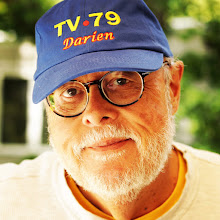PR & The Media: The Perfect (Ethical) Storm
Who’s to blame for the misuse of VNR’s and SMT’s? The PR agencies and the clients they produced them for, or the media, for running them without full disclosure? I’d argue that both are culpable. As a former-reporter-turned-media-trainer, I think PR and the media are co-conspirators in the fake news debacle, with the public being the real losers.
Stations take VNR’s and SMT’s because they 1) need to fill air time, 2) are of no cost to them and 3) have (hopefully) some programming value. PR people know the media’s need for infotainment and see the credibility of supposed news as a great venue for their message. In my view, there’s nothing wrong with hand-out tape as long as its source is identified.
Full disclosure: I narrate VNR’s and I train dozens of people for SMT’s every year, but I always counsel my clients to be upfront about the source of these “free” feeds. If a financial analyst can be quizzed on CNBC about the stocks he’s plugging, why shouldn’t a doc disclose that he’s being paid to be a guest expert on an SMT flogging a new drug?
But the ethical dance between PR and the media doesn’t end with just VNR’s and SMT’s. Too much discussion has focused on TV, while ethical lapses abound in print. Consider the following true cases and tell me who’s to blame. (The names have been changed to protect the ‘innocent’, but these are far from isolated examples.)
THE JUNKET: To launch a new cosmetic product, Fabco PR needs to get the attention of senior editors at the “beauty books”. A jaded bunch, these ed’s can’t be bought with a mere lunch at Le Cirque. So, Fabco charters a 757 to whisk them thousands of miles away for a long weekend of pampering, fine food and a small portion of product hype. The result: dozens of pages of gushing news coverage with ‘nary a mention to readers that these mags’ praise for the product was bought with their editors’ schmoozing.
THE AWARD: To promote awareness of their disease (let’s call it fabulosis), the Fabulosis Foundation holds an awards contest to “honor” journalists’ coverage of this affliction. Widely promoted in the news-biz trades, reporters submit articles and video clips of their coverage for the judges’ consideration. A nice plaque and a big check await the winner. But were their stories created to win the big prize, or because the disease really warrants greater public attention. Did the Foundation prime the pump, or was the well really dry?
THE AD BUY: A trade reporter interviews a marketing exec about a new product and hears a great story worthy of ink. Not satisfied, the marketer reminds the reporter that his company is buying several pages of ads in his trade, clearly implying that the product launch deserves bigger play. (This dance can also be led by the ‘reporter’ who just happens to present a rate-card to the marketer at the conclusion of the interview).
THE DEMO: The Acme Outdoor Co. wants to promote its fashionable attire, camping and active-lifestyle gear. A freelancer is pitched on a new windbreaker, says he’s interested, but really wants to check it out. A sample is sent to the reporter who writes a fair critique which is published with no mention of how the gear was obtained. And the clothing is never returned… nor was it expected to be. Was the reporter accepting a subtle bribe… or asking for one?
THE TRAVEL WRITER: They’re called “fam trips”, or “familiarization trips”, but they’re hardly the kind of travel we peons enjoy. When a travel writer visits a destination, it’s all expenses paid and often first class. Yet, the glowing reports written on the adventure never disclose that the reporter was comp’ed and that his hosts knew he was a reporter, giving him VIP treatment. (One might argue that the food critic or theater critic who accepts a free meal or tickets without disclosing it is similarly fraudulent.)
Are these examples of entrapment, or just PR and marketers exploiting the greed of so-called journalists?
We all know that most real news organizations have rules against accepting gratuities. When I was at NBC News, there was no “free lunch”. And Conde Nast Traveler makes its writers always pay their own way. But for every NBC and CNT, there’s a dozen other cable networks and wannabe travel magazines. For the PR weasel looking to buy a good story, there are always other opportunities.
Eventually, the media and marketing malfeasants will be shown for what they are. When the truth comes out, the public will vote with its wallets… the new beauty product won’t be all its hyped to be, the disease award will be just another plaque and the travel writer’s review will be understood to be transparently hyped.
Consumers aren’t stupid. But maybe we are for thinking there’s always another way of buying their attention.
###
JIM CAMERON has spent almost 30 years in broadcasting and PR. Following a career at NBC News where he received a George Foster Peabody award, he launched his own consultancy, Cameron Communications Inc., based in Darien CT which specializes in media training. More information about his firm can be found at www.mediatrainer.tv


0 Comments:
Post a Comment
Subscribe to Post Comments [Atom]
<< Home